When you practice running, it is important to have an equipment truly adapted to you and your body. For choosing your shoes for example, you must consider various morphological characteristics such as the shape of your foot (size, width, type of stride), as well as environmental ones like the terrain you will be running on or the distance covered. Running with a pair of well-fitted shoes offers stability and allows you to run comfortably and safely throughout your activity.
In addition to being suited to you, your shoe must also be properly adjusted. Indeed, if you feel any discomfort, pain, or if your foot moves excessively within your shoe, it may be badly adjusted or laced.
In this article, our experts explain the benefits of lacing your running shoes correctly and the different lacing methods to alleviate common issues that runners may encounter.
In a hurry? Jump to the comparison table
The purpose of laces is to keep the shoe on your foot. If your laces are too tight or too loose, your shoe slips and you lack stability which can be dangerous; if they are too tight or improperly tight, you either compress your entire foot or put pressure on specific areas of the foot, which can then lead to discomfort, friction, irritation, and pain.
Properly lacing your shoes is recommended to:
Clearly, having a fitted and adjusted shoe increases comfort, your stability, and thus improves your speed and your overall running experience.
The common or classic lacing is the one you already find when you open the box of your new pair of shoes. This zig-zag lacing from the bottom to the top of the shoe is popular as it is suited to the average foot and fits a large portion of the population. However, if you do not have an average foot (if you are a pronator, supinator, or have a wide foot), it is not suitable for you or the issues you may encounter.
There are nearly 2 trillion different possibilities for lacing your shoes, and some have even been mathematically studied to understand their properties1.
Without going into this kind of details, we show you here 8 lacing methods that address most of the issues that runners face.
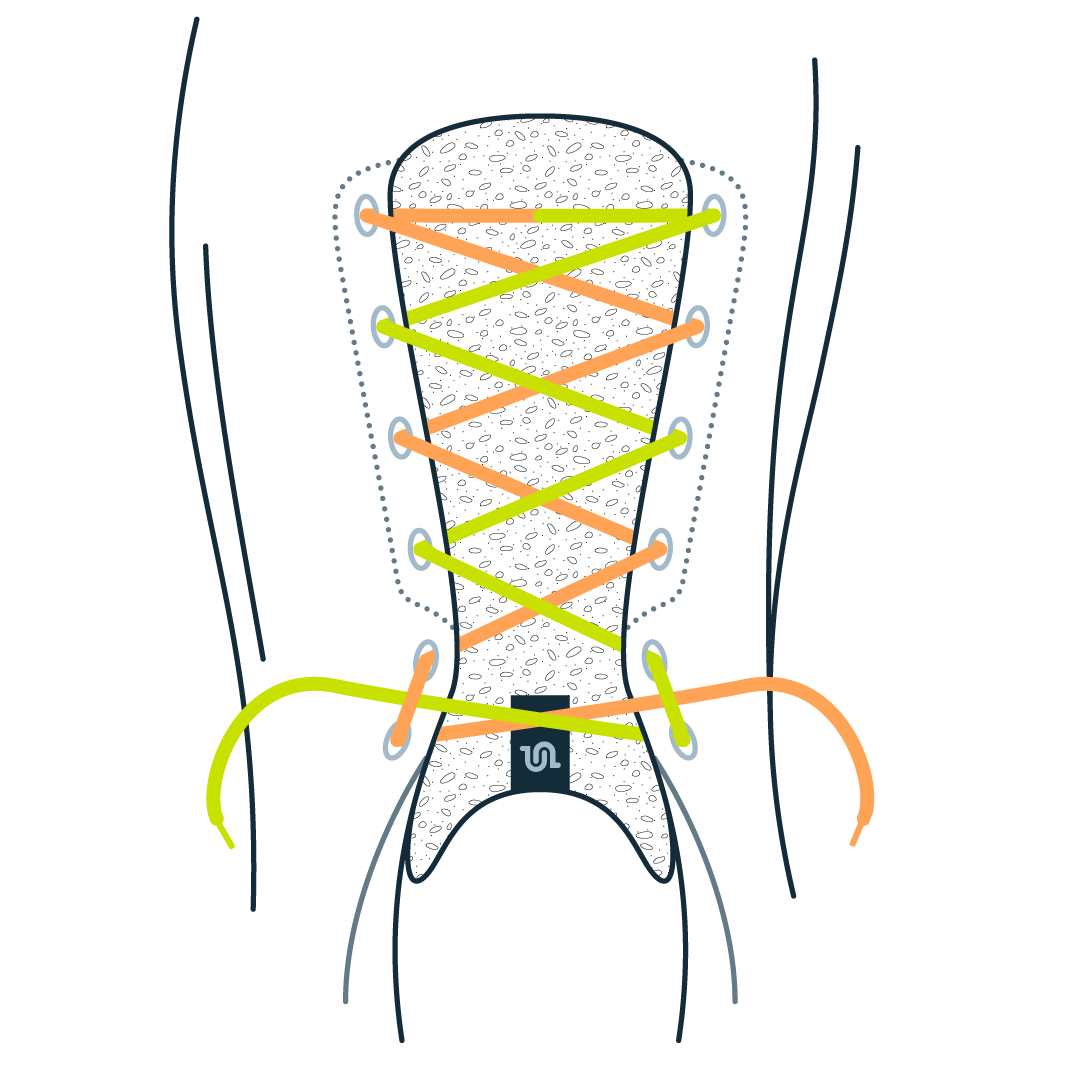
The Runner’s Loop, also known as "marathon lacing" or the "heel lock", is the perfect lacing method if your heel slips in your shoe during a run. This technique ensures a lock at the heel level that prevents any movement, reduces friction, and blisters.
Pros:
Cons:
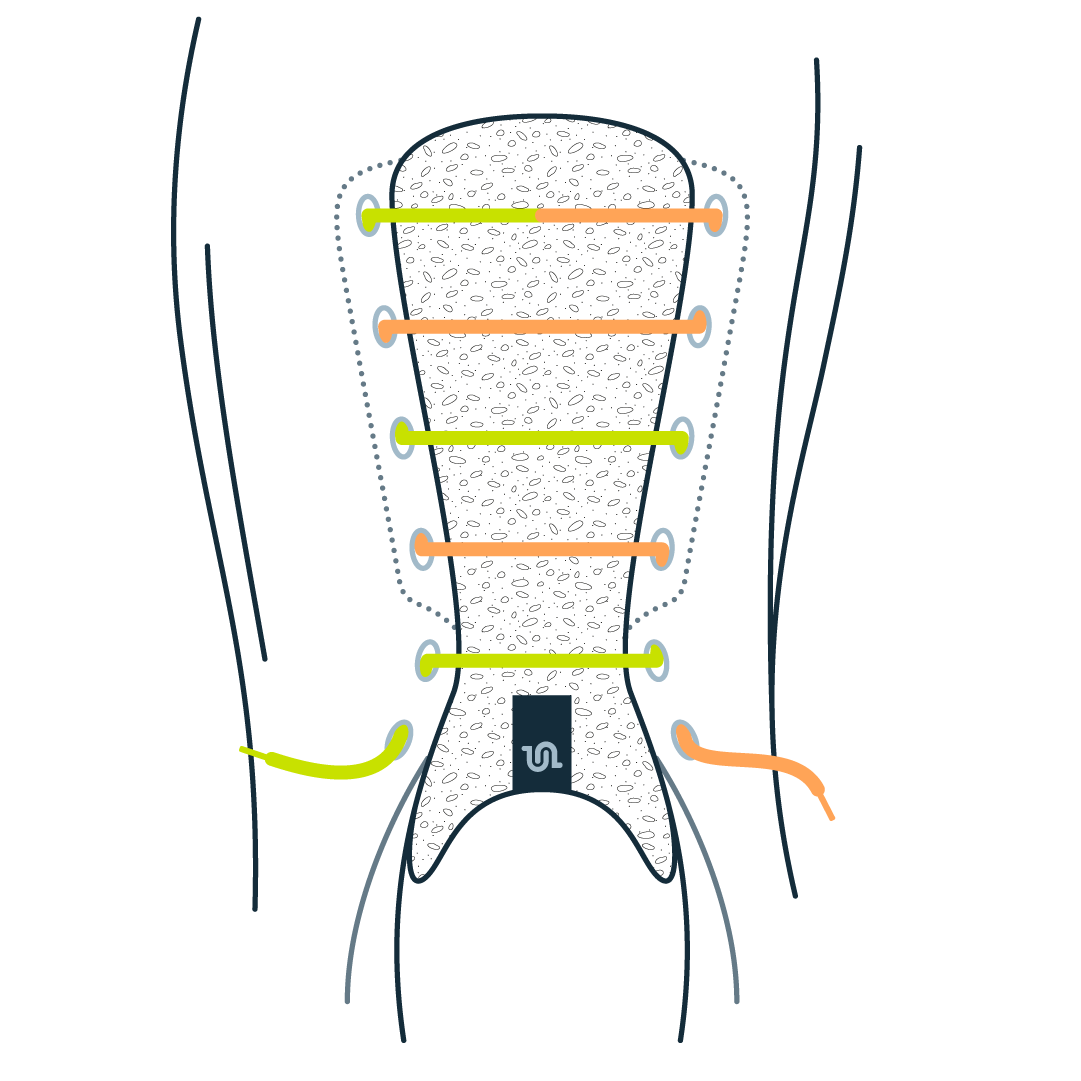
If you feel that your shoes are too narrow and uncomfortable during a run, parallel lacing is recommended. Indeed, during a run, your feet swell, taking up a bit more space (which is why we add 1cm more when choosing a pair of running shoes). Parallel lacing helps to reduce pressure on the top of the foot and distribute it evenly along the sides. This lacing is also suited for wide feet.
Pros:
Cons:
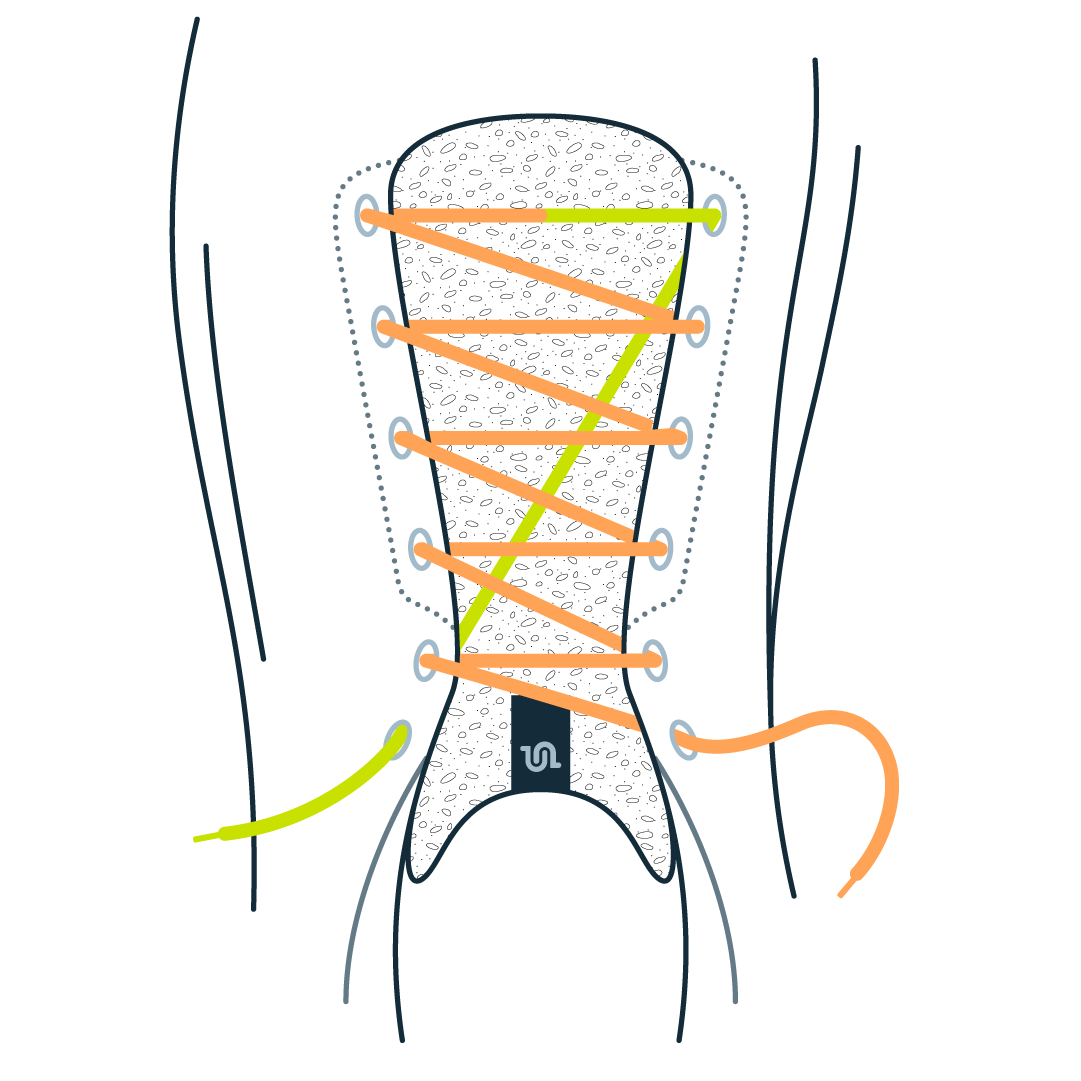
If you experience toe pain or have black toenails, it's a problem of pressure at the toes. This technique of lacing reduces pain in this area and prevents black toenails by lifting the "toe box", which provides more space for your toes.
Pros:
Cons:
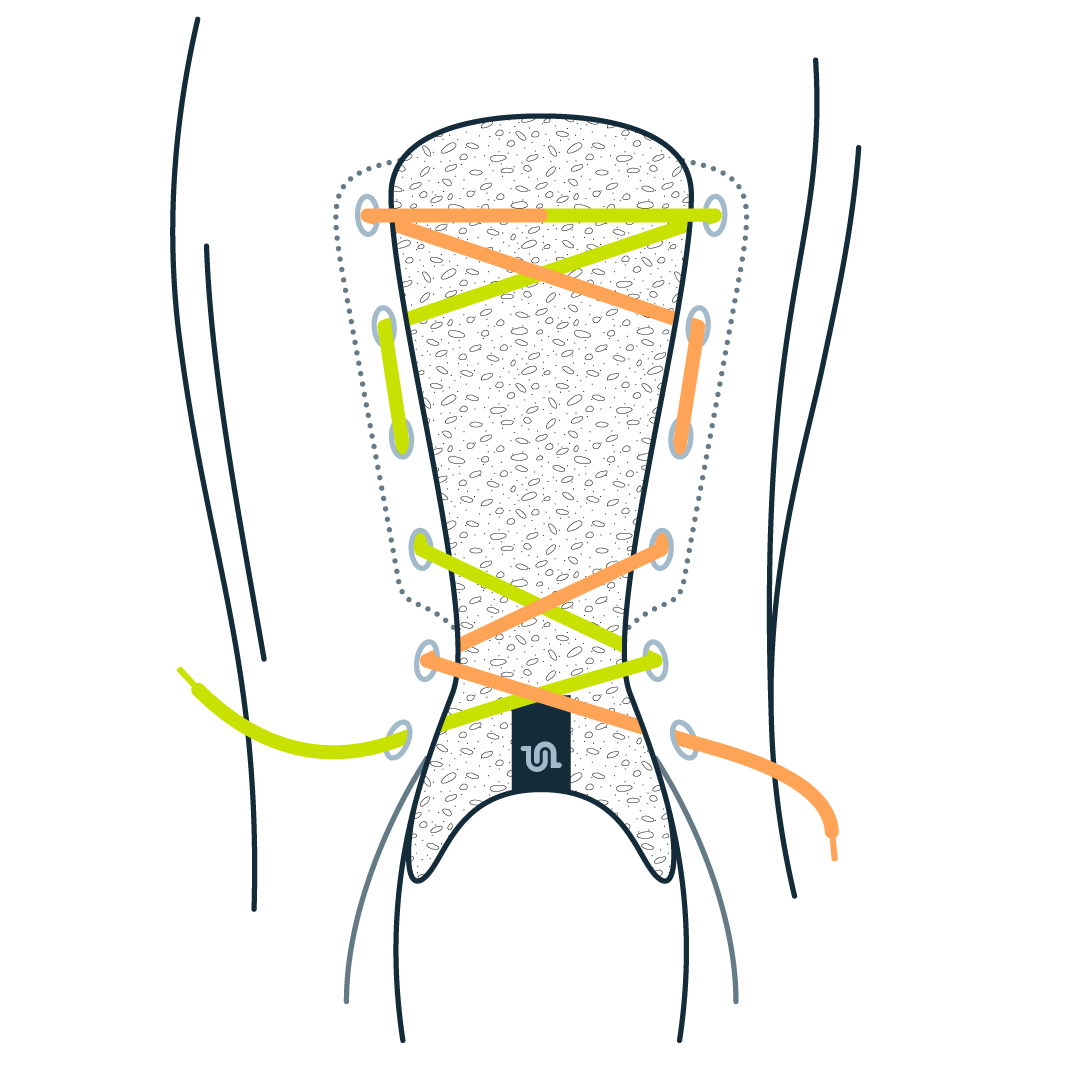
If, like some runners, you have high arches, also called cavus feet, your arch is higher/more curved than the average. During a run, the pressure exerted by the high arch can cause discomfort on the top of the foot. This lacing technique creates a window/unlaced space that reduces pressure on the painful area.
Pros:
Cons:

If you have a wide forefoot, you can use this lacing technique to provide more space at the front of the shoe. This will reduce pain and improve your comfort while you run.
Pros:
Cons:
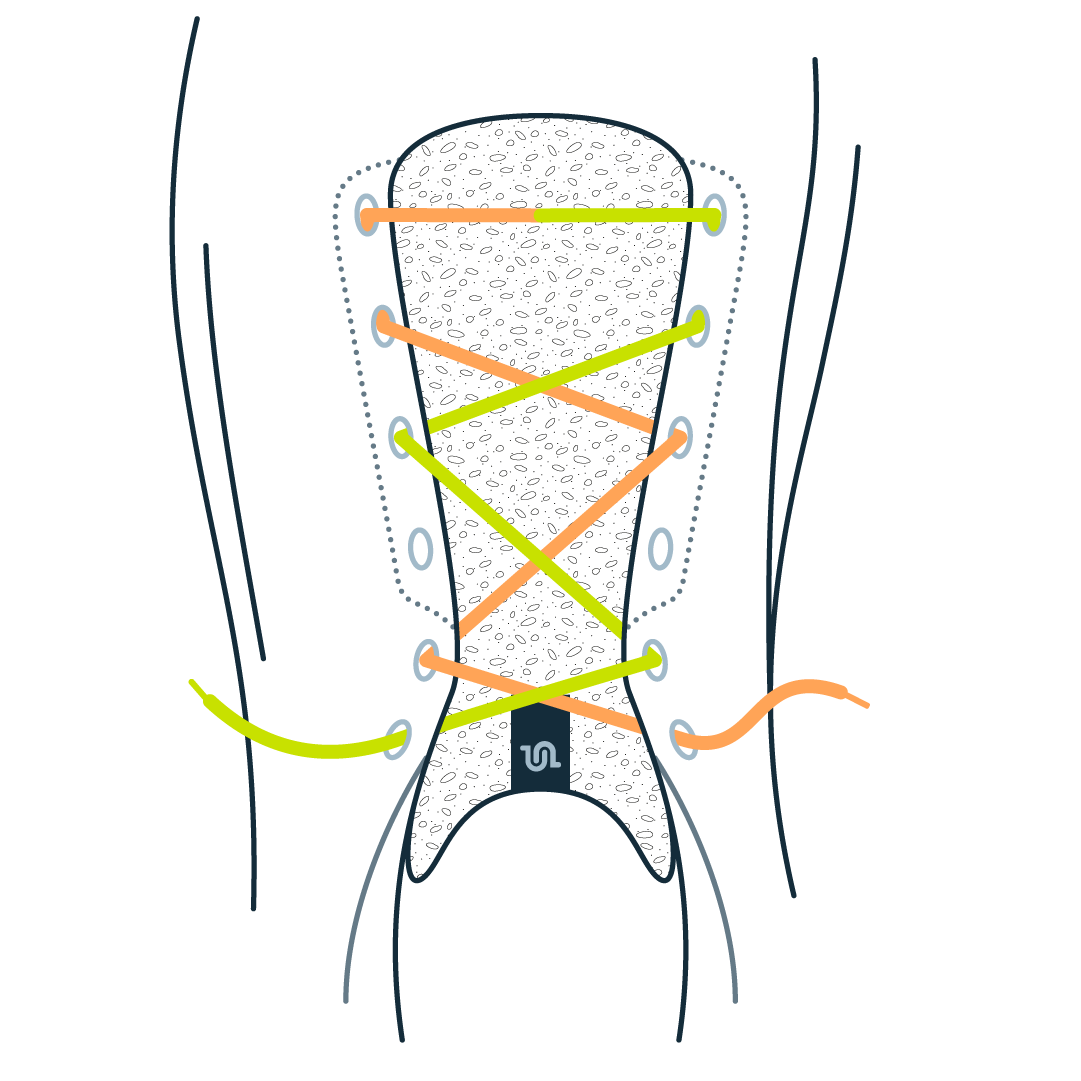
If you have narrow or slim feet, your shoe probably lacks support, which leads to the shoe slipping. With this technique, the front, middle, and heel of the shoe are tightened, ensuring more effective support.
Pros:
Cons:
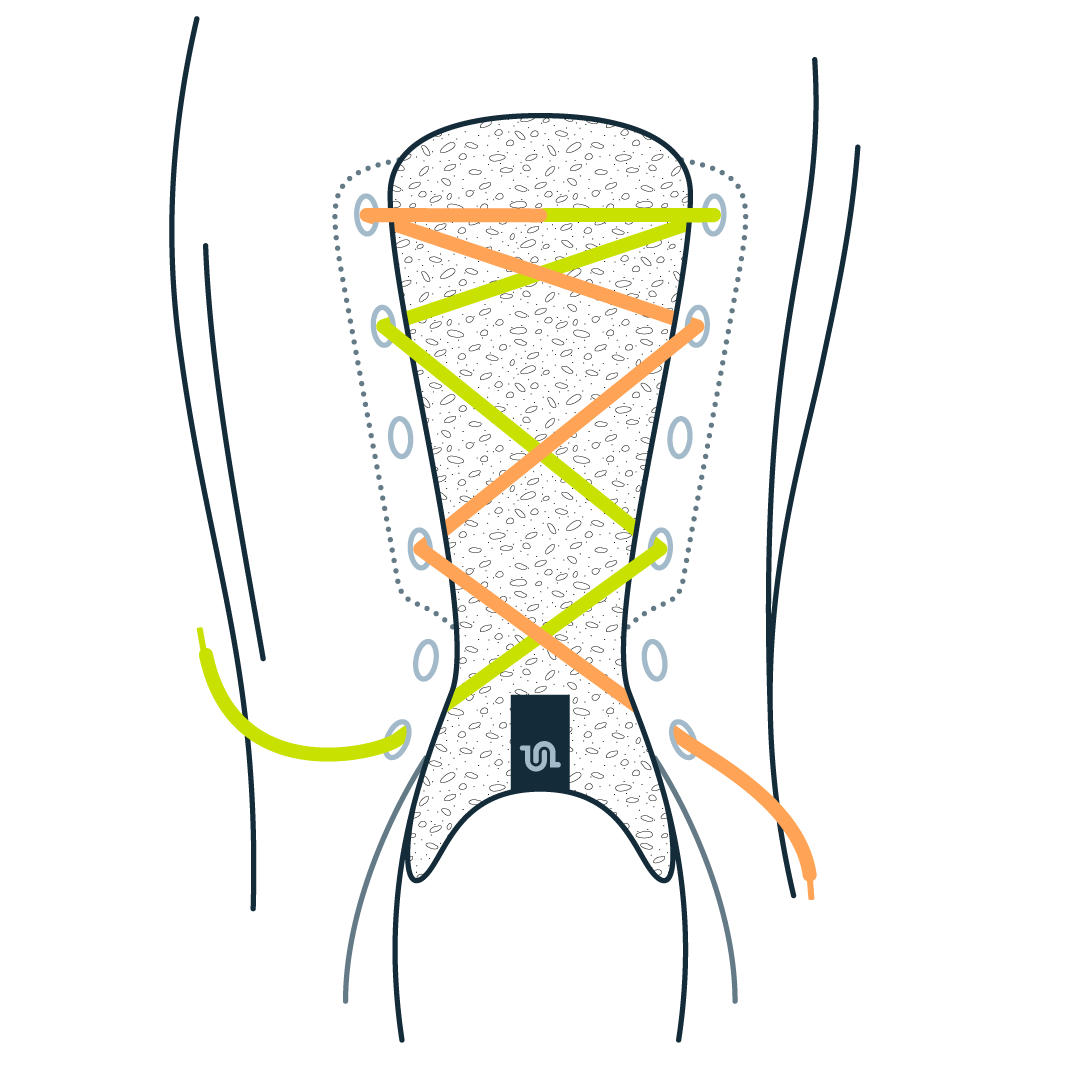
Runners with wide feet often experience discomfort with traditional lacing. This lacing technique reduces pressure across your entire foot to give it more space. This solution helps relieve discomfort and pain. However, if the pain persists, we advise you to opt for shoes designed for wide feet.
Pros:
Cons:
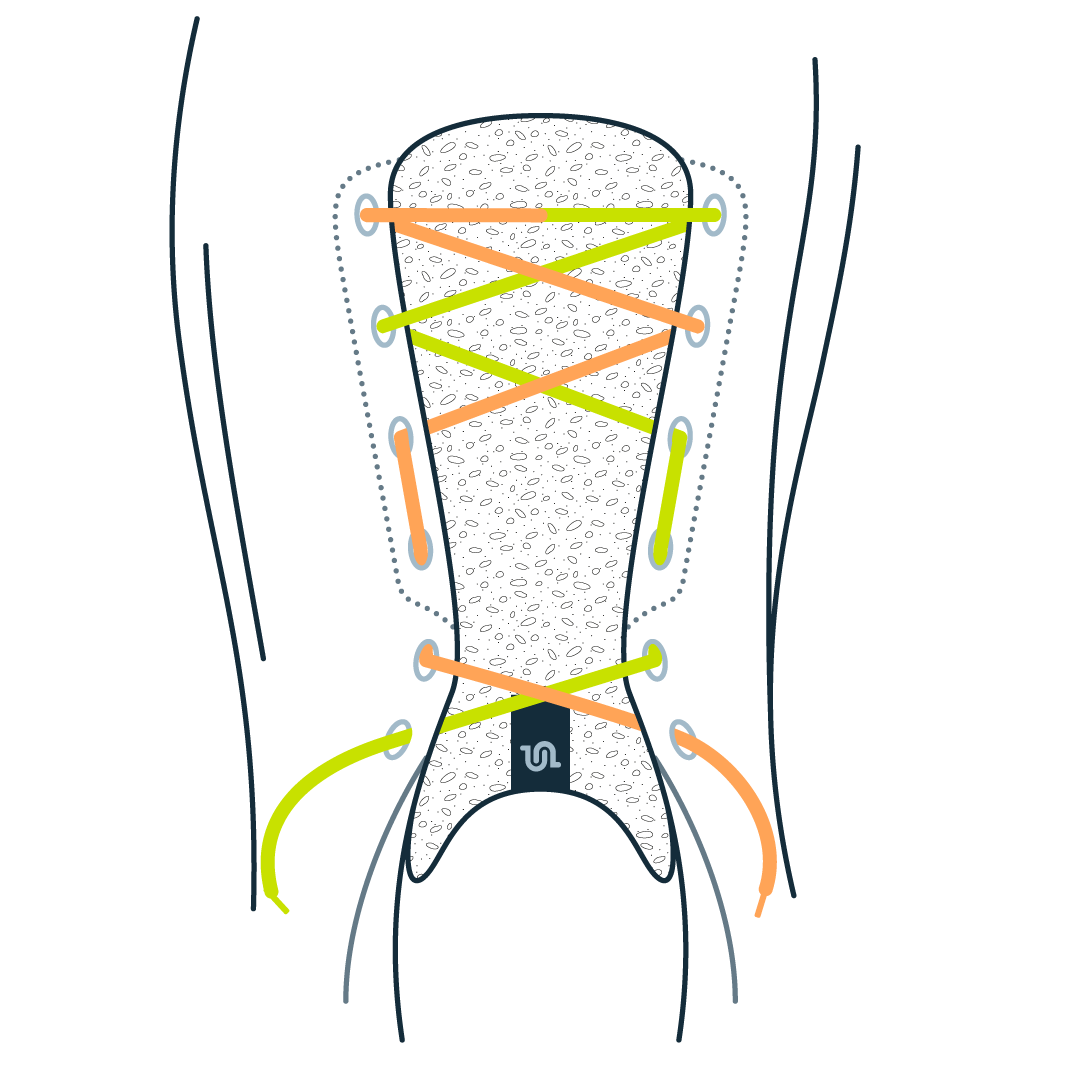
If you have a high midfoot, you may feel discomfort on the upper part of the foot. This lacing method, similar to that for "High Arches", allows for a non-laced but slightly higher window. With this freed space, the pressure is reduced on the painful area.
Pros:
Cons:
| Problem | Recommended Lacing | Key Benefit |
|---|---|---|
| Heel slipping |
 Runner's Loop
Runner's Loop
|
Maximum hold |
| Top-foot pressure |
 Parallel Lacing
Parallel Lacing
|
Even pressure |
| Toe pain / black toenails |
 Single Helix
Single Helix
|
More space for toes |
| High arches |
 Window Lacing
Window Lacing
|
Relieves pressure |
| Wide forefoot |
 Forefoot Lacing
Forefoot Lacing
|
Freer toe box |
| Narrow feet |
 Tight Cross Lacing
Tight Cross Lacing
|
Better lockdown |
| Overall wide feet |
 Loose Lacing
Loose Lacing
|
More room |
| High midfoot pain |
 High Window
High Window
|
Comfort on top |
There is no perfect way to lace your running shoes since all feet are different and thus the suitable lacing is different.
If you are unsure which lacing method to choose, determine the shape of your foot (flat, medium, or high arch), identify any pain or discomfort you might feel while you run, and then try the various techniques we have proposed to alleviate these sensations.
Do not underestimate the importance of wearing adapted shoes to your activity and the morphology of your feet. Indeed, tying your laces appropriately on running shoes that are not suited to your foot shape will be of no help and offer no advantage.
To assist you in your choice, you can always read our article explaining "how to choose a pair of shoes to start running"
Note: Be aware that lacing techniques can solve minor issues and pains. If you experience persistent or significant pain, consult a sports doctor or podiatrist.
1. Burkard Polster, The shoelace book : a mathematical guide to the best (and worst) ways to lace your shoes, Providence (R.I.), American Mathematical Society, 2006